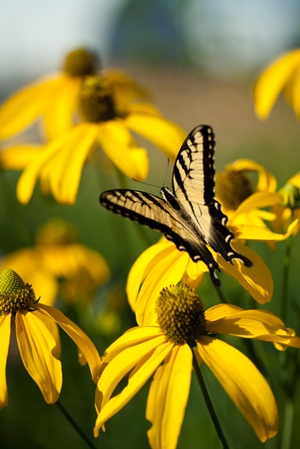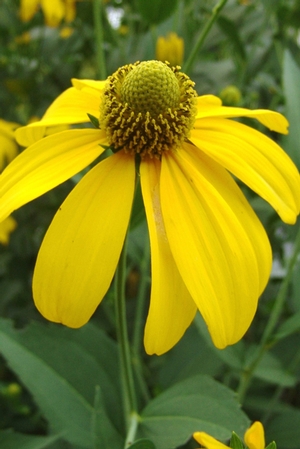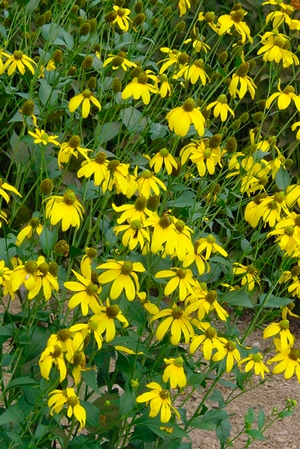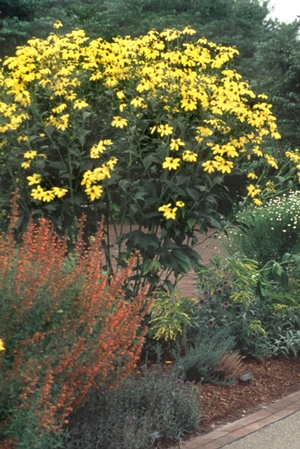Rudbeckia laciniata
Common: cutleaf coneflowerRudbeckia laciniata LP50 - 50 per flat
- Height: 5'-8'
- Spread: 3'-4'
- Spacing: 18"
- Hardiness Zone(s): 5-7


Rudbeckia laciniata LP50 - 50 per flat



This coneflower is a tall, erect and stately native with yellow ray petals accented by a green center held by coarse, hairy stems. Blooms in August and September. Excellent cut flower and butterfly magnet. R. laciniata can be found blooming in moist meadows, grassy roadsides and flood plains from Quebec to Montana south to Arizona and Florida.
Prefers average, medium to moist soils in part to full sun. Tolerates hot, humid summers, but not drought tolerant. Spreads by rhizomes, so give it room to grow. Outstanding in mass plantings, as a back-of-the-border perennial and in meadow, prairie and cutting gardens.
Rudbeckia lacinata is a tall, erect and stately native with yellow ray petals accented by a green center held by coarse, hairy stems. Growing anywhere from 5-8’ tall, depending on location, and spreading by rhizome from 2’ and further, this cutleaf coneflower is different from other coneflowers by its lemon-yellow blossom, tall statuesque form, and cutleaf basally clumped foliage. It blooms in August and September, late in the summer when other parts of the garden have moved out of its prime. An excellent cut flower and butterfly magnet, this beauty is lovely anywhere it has room to grow.
Rudbeckia lacinata can be found blooming in moist meadows, grassy roadsides and flood plains from Quebec to Montana south to Arizona and Florida. It prefers average to moist soils in light shade to full sun. In areas with adequate moisture, R. lacinata spreads readily by rhizome and can blanket an entire area. It is best to give cutleaf coneflower enough room to grow in those situations and not planted too closely to less vigorous perennials or woody plants. In areas with rich soil and lots of moisture, the plant may also require staking.
The Rudbeckia lacinata on our property runs along a ravine, in the dappled shade of three deciduous trees. It has colonized the area, providing erosion control, habitat and feeds pollinators. The flowers support many different kinds of insects including multiple varieties of bees, wasps, butterflies, skippers, and flies with the Common Goldfinch enjoying the small seeds in winter. In late summer, when the mass begins to bloom, it provides bright color and is especially wonderful in mass plantings, as a back-of-the-border perennial and in a meadow, prairie or cutting gardens.